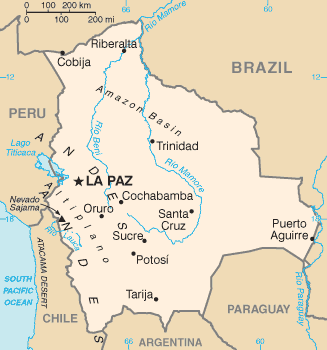| Water resources management in Bolivia | |
|---|---|
| Withdrawals by sector 2000/2001 |
|
| Renewable water resources | 623 km3 |
| Surface water produced internally | 277 km3 |
| Groundwater recharge | 130 km3 |
| Overlap shared by surface water and groundwater | 104 km3 |
| External renewable water resources | 7 km3 |
| Dependency ratio | 51.2% |
| Renewable water resources per capita | 71,511 m3 per year |
| Wetland designated as Ramsar sites | 65,000 km3 |
| Hydropower generation | 40% |

Bolivia has traditionally undertaken different water resources management approaches aimed at alleviating political and institutional instability in the water sector. The so-called water wars of 2000 and 2006 in Cochabamba and El Alto, respectively, added social unrest and conflict into the difficulties of managing water resources in Bolivia. Evo Morales’ administration is currently developing an institutional and legal framework aimed at increasing participation, especially for rural and indigenous communities, and separating the sector from previous privatization policies. In 2009, the new Environment and Water Resources Ministry was created absorbing the responsibilities previously under the Water Ministry. The Bolivian Government is in the process of creating a new Water Law – the current Water Law was created in 1906 – and increasing much needed investment on hydraulic infrastructure.
© MMXXIII Rich X Search. We shall prevail. All rights reserved. Rich X Search
